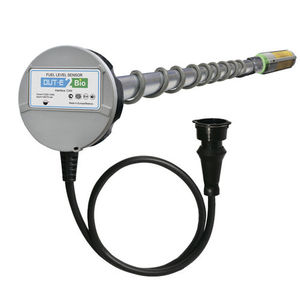
- Equipment
- Marine Electronics
- Boat sensor
- JV Technoton
Level sensor DUT-Efor boatfor storage tanksfuel
Add to favorites
Compare this product
fo_shop_gate_exact_title
Characteristics
- Measured value
- level
- Application domain
- for boat
- Applications
- for storage tanks
- Other characteristics
- fuel
Description
DUT-E fuel level sensors are used for accurate fuel level and volume measurement in tanks of vehicles and stationary units. DUT-E allows to determine current fuel volume and change in volume (refuelling or draining) of fuel in the tank.
DUT-E is used in GPS tracking and vehicle telematics systems as additional fuel sensor or as a replacement of standard built-in (factory) fuel level sensor. When used as a part of telematics system, DUT-E allows to get reliable and accurate information on current fuel volume in the tank and to reveal misuse and fuel theft from tank. DUT-E also gives a general overview on fuel usage by vehicle or stationary unit.
Built on new technology – IoT Burger
DUT-E fuel level sensors are built on IoT Burger technology and support S6 technology. IoT Burger technology allows maximum “on board” data processing. Raw data on fuel level is refined by sensor and only useful information is sent to telematics unit. This allows to avoid blind spots caused by data transfer interval and get more accurate and stable information in telematics software.
Multi-tank measurement with S6 technology
S6 technology is used for creating a network of IoT devices within an object. DUT-E are compatible with S6 technology and that allows to create a network of sensors on one vehicle/stationary unit. This feature allows to monitor fuel volume in several tanks at the same time and also gives an opportunity to connect other telematics onboard equipment. Main advantages is that all sensors are configured and all data are sent through a single cable, connected to CAN-port of telematics device.
Catalogs
*Prices are pre-tax. They exclude delivery charges and customs duties and do not include additional charges for installation or activation options. Prices are indicative only and may vary by country, with changes to the cost of raw materials and exchange rates.







